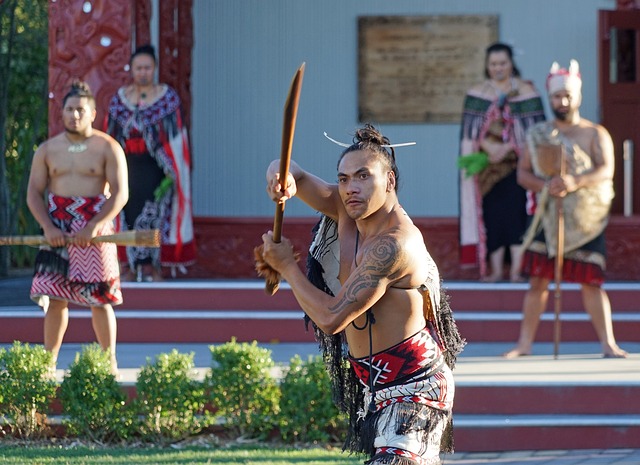Mau Rākau, the traditional Māori martial art, has deep roots in NZ’s cultural history. It’s not just about combat but embodies a profound spiritual and cultural practice passed down through generations. Originating from the Māori warriors, or toa, Mau Rākau involves the use of various weapons like taiaha (a wooden staff) and mere (a short, broad weapon made from greenstone or whalebone). Today this art form is taught in numerous clubs and schools, each preserving its heritage and passing on this knowledge to new generations.
The Rich History of Mau Rākau
Mau Rākau’s history is intertwined with the stories of Māori ancestors, who were fierce warriors. The training was rigorous and began at a young age. Young Māori men learned to handle traditional weapons, mastering techniques that were crucial for both hunting and combat. The Toa Rangatira, a famous group of elite warriors, exemplified the prowess and skills developed through Mau Rākau. They trained in specialized schools called Whare Tū Taua, a tradition that continues today. In modern New Zealand, the legacy of these warriors lives on in communities like Rotorua and Gisborne, where dedicated practitioners teach Mau Rākau.
Clubs and Training Schools in New Zealand
Numerous clubs and training schools are dedicated to preserving and teaching Mau Rākau. One notable institution is the Whare Tū Taua o Aotearoa, established by Dr. Pita Sharples in Auckland. This school focuses on maintaining the traditional methods and spiritual aspects of Mau Rākau. Additionally, Te Whare Tū Taua ki Te Arawa in Rotorua offers extensive training programs. These clubs not only teach the physical skills but also emphasize the importance of Māori values and customs, ensuring that students understand the cultural significance behind each move and stance.
Significant Locations and Cultural Centres
New Zealand is rich with cultural centres where Mau Rākau is practiced and celebrated. The Te Puia in Rotorua, for instance, is not only a geothermal wonderland but also a hub for Māori culture. Visitors can witness Mau Rākau demonstrations and even participate in introductory classes. Similarly, the Tūrangawaewae Marae in Ngaruawahia hosts various cultural events where Mau Rākau plays a significant role. These places are vital in keeping the tradition alive, providing both locals and tourists with an opportunity to engage with this fascinating martial art.
Modern Applications and Public Trends
In recent years, Mau Rākau has seen a resurgence in popularity, thanks to a growing appreciation for Māori culture and heritage. This martial art is increasingly being incorporated into fitness regimes and self-defense classes. Schools like the Te Wharekura o Rākaumangamanga in Huntly have integrated Mau Rākau into their curriculum, offering students a unique way to connect with their ancestry while developing physical fitness and discipline. Moreover, public events and festivals such as the Matariki Festival often feature Mau Rākau demonstrations, attracting widespread interest and participation.
Impact on Youth and Community
Mau Rākau has a profound impact on the youth and community. Programs like Te Ara a Tāwhaki, supported by the Ministry of Youth Development, use Mau Rākau to empower young people, instilling a sense of pride and identity. These programs focus on teaching respect, discipline, and cultural knowledge, helping young Māori navigate modern challenges while staying connected to their roots. The community benefits immensely from these initiatives, fostering unity and cultural continuity.
Future Prospects and Challenges
The future of Mau Rākau looks promising, with increasing recognition and support from both Māori and non-Māori communities. However, there are challenges, such as the need for more qualified instructors and the preservation of traditional knowledge in an ever-modernizing world. Efforts are underway to document techniques and oral histories to safeguard this precious heritage for future generations. Organizations like the New Zealand Māori Arts and Crafts Institute are playing a crucial role in these preservation efforts, ensuring that Mau Rākau continues to thrive and inspire.
Learning and Participating in Mau Rākau Today
For those interested in learning Mau Rākau, there are numerous opportunities: many clubs offer beginner classes, where students can learn the basics of weapon handling and combat techniques. The Te Whare Tū Taua o Aotearoa website provides a directory of clubs and training programs nationwide, making it easy to find a local group. Participating in Mau Rākau is not just about physical training; it’s an immersive experience that offers deep insights into Māori culture and traditions.

